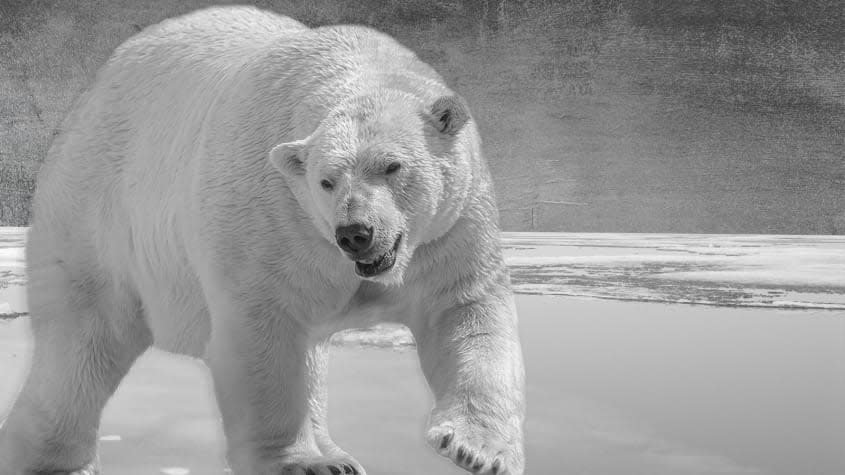How climate change could lead to more animal attacks

In January 2023, a polar bear in Alaska attacked and killed a mother and her one-year-old son, the first fatal mauling of its kind in over 30 years. However, these types of interactions between humans and animals may become increasingly common due to the growing threat of climate change. Here's everything you need to know:
Why might the polar bear attack be attributed to climate change?
Polar bears have been acutely affected by the warming planet because arctic ice is rapidly shrinking. "It is rare for polar bears to attack humans, although anecdotal evidence suggests the frequency is increasing," David Meanwell, director of the nonprofit Bear Conservation, told Newsweek. Between 1870 and 2014 there were only 73 polar bear attacks causing 20 deaths across Canada, Greenland, Norway, Russia, and the United States, reports The Washington Post.
It is even more rare for polar bears to attack this deep into winter since there would normally be a plethora of ice. "This was in that window where historically people would feel pretty safe," explained Geoff York, senior director of conservation at Polar Bears International. "We're seeing the Arctic transform and warm at almost degrees faster than the rest of the planet."
Polar bears are at the top of the food pyramid and humans are potential prey for them, however, an attack like the one in Alaska is likely a result of a young or desperate bear. "If this was a young or old bear it could well be that the animal was hungry and the attack predatory," Meanwell said. "That is unusual at this time of year, so if the bear was healthy, it is indeed possible that climate change may have been a factor."
Why are animal-human interactions becoming more frequent?
Human-animal interactions have been on the rise, increasing "in frequency and severity," per an article in the journal Science. One of the forms of interactions is conflict, including attacks like the Alaska mauling.
These interactions occur when there is an overlap between human society and animal habitats, a condition that is becoming more common due to climate change. Because animal habitats are becoming fragmented, many species are forced to migrate to new regions that align with their ecological niche. As temperature changes increase, the number of suitable habitats reduces leading to inevitable overlap.
This isn't just occurring in the Arctic. Bear attacks in Japan have become more common because of the country's dramatic landscape and climate shift. "There seem to be several factors contributing to the increase in these cases, but I think one of the biggest — particularly this year — is the effect of climate change," explained Mariko Abe, of the Nature Conservation Society of Japan. "For the last decade or so, the rainy season that used to reliably last for around a month from mid-June has become shorter and delivered less rain."
Interaction doesn't just include attacks against humans. For example, in 2015 and 2016 there was a marked increase in the number of whales getting caught in fishing nets largely due to the increased ocean temperatures pushing the animals closer to shore. There have also been instances of carnivorous animals preying on livestock from human communities, worsening food security issues. One thing that could ease the growing tension? "Less meat production, and nobody wants to hear that," says Pat Parenteau, a professor of environmental law at Vermont Law School. "Livestock production by itself is a massive cause of habitat loss and obviously conflict with predators."
What are other consequences of human-animal interactions?
Human-animal interactions don't just end on the macro-scale. Increased contact can also lead to the increased spread of disease.
Zoonotic diseases, or diseases spread by animals, have become more common. Examples include malaria, the Zika virus, and COVID-19. According to a study in Nature, "At least 10,000 virus species have the ability to infect humans but, at present, the vast majority are circulating silently in wild mammals."
"You're just seeing the effects of the change in the environment, the change in animal behavior, the change in human behavior, bringing wild animals and humans more into contact where they can have more contamination," said Lanre Williams-Ayedun, the senior vice president of international programs at World Relief. A UN study found that zoonotic diseases comprise 60 percent of known infectious diseases and 75 percent of emerging diseases, NPR reports.
Viruses can adapt easily in new species once given the chance to spread. Because of this, "It's easy to spread diseases globally," and "something that happens in ... a remote part of the world somewhere can very easily become something that is a concern where we live," explains Williams-Ayedun.
These interactions will only become more frequent as climate change becomes more severe.
You may also like
The Hogwarts Legacy boycott controversy, explained
Linda Ronstadt is already the Kate Bush of 2023 thanks to The Last of Us


